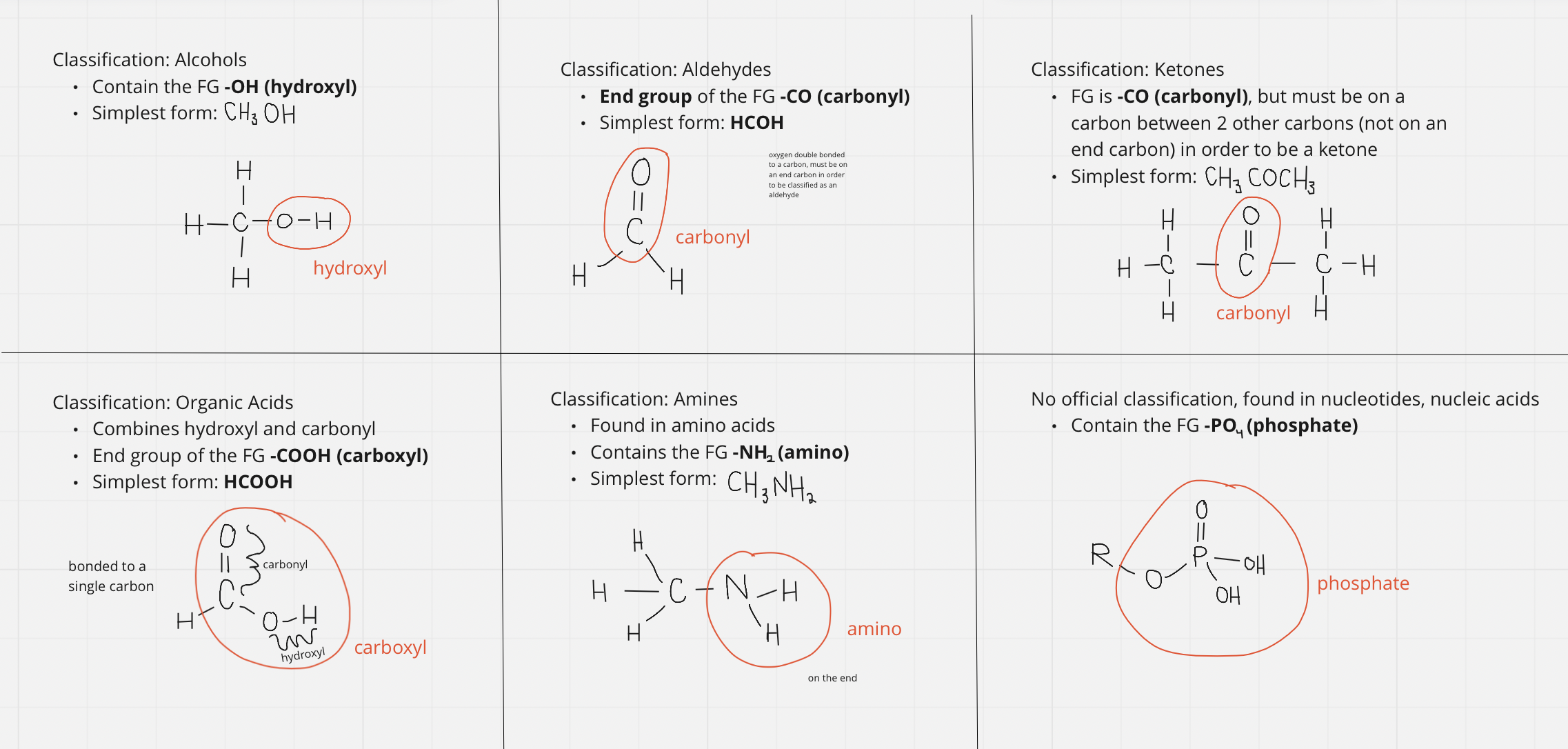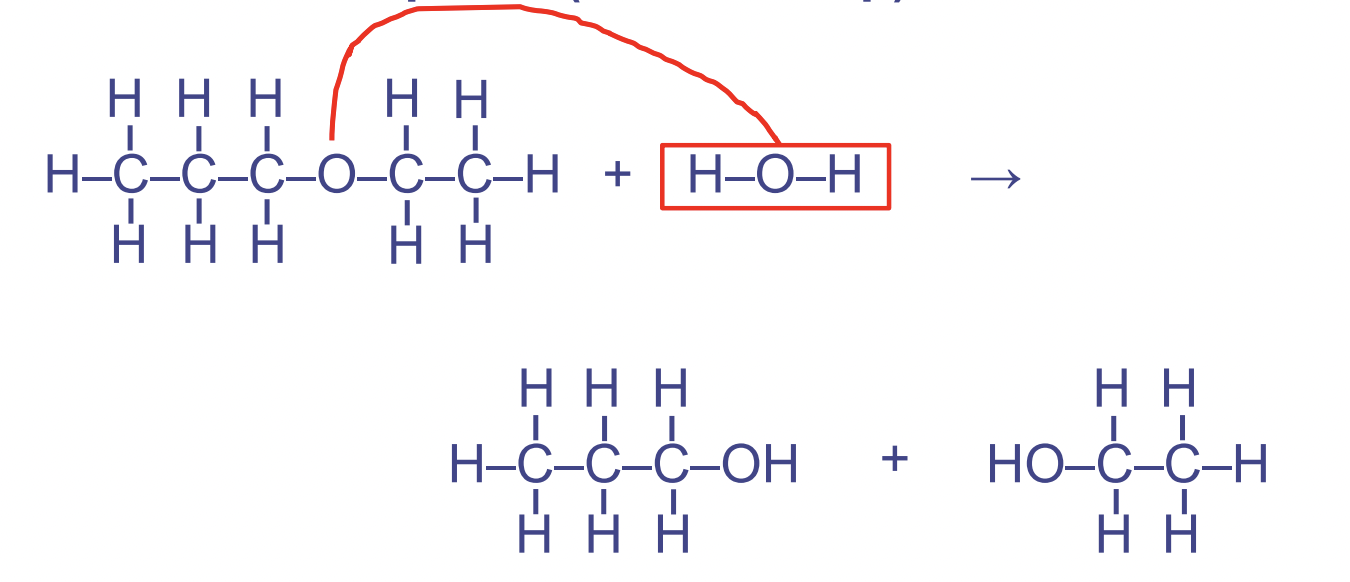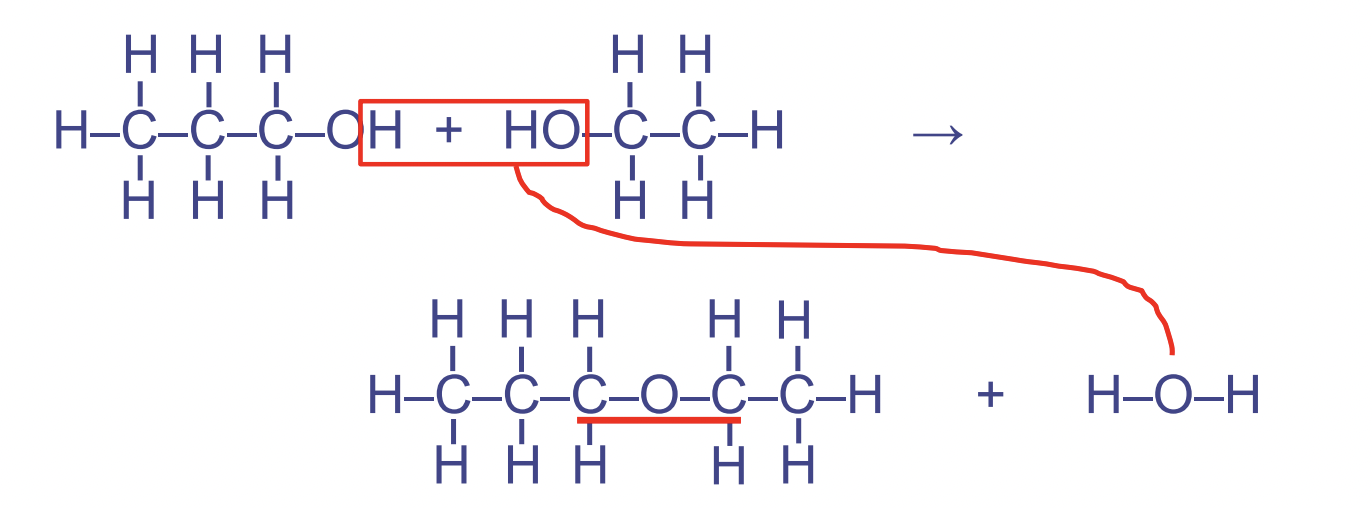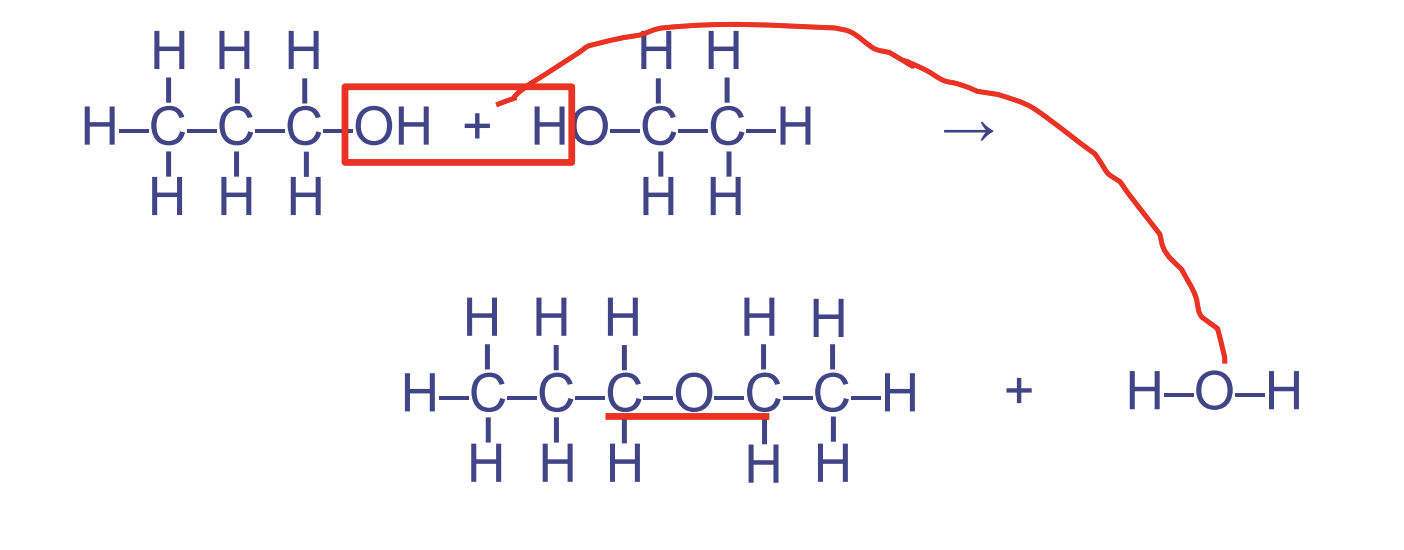12-01: Functional Groups and Linkages
Most of a living organism is water
The remaining amount of “stuff” in an organism falls into 4 main categories:
Carbohydrates
Lipids
Proteins
Nucleic Acids
Biochemistry
Many cellular molecules are complex and can be made up of thousands of atoms
These molecules are made by stringing together many smaller units → Single units are called monomers, multiple units are called polymers
Anabolic reactions: build up substances
Catabolic reactions: break down substance
Both catabolic and anabolic reactions occurring in an organism: metabolism
Intramolecular bonds: bonds within a molecule
3 types of intramolecular bonds
Covalent bonds
2 atoms share electrons (e-) → 2 non metals
Ionic bonds
1 atom loses an e- and 1 gains an e-
Polar covalent bonds
Sharing the e- less fairly
Electronegativity (EN): the strength in which an atom attracts e- → how aggressive it is
The type of intramolecular bond is distinguished by a difference in electronegativity (∆EN)
Covalent: ∆EN < 0.4 → share equally
Polar covalent: ∆EN = 0.5-1.7
Ionic: ∆EN > 1.7 → atom with greater EN takes e- from atom with lesser EN and both become charged
Polar Covalent Bonds
One atom has a stronger hold on e- they share
One end of the molecule gets slightly positively charged and one end gets slightly negatively charged
δ+ → one end gets + charge (weaker EN)
δ- → one end gets - charge (stronger EN)
This influences what will be attracted and how things will biologically interact
Water is polar → has polar covalent intramolecular bonds
Because of Oxygen (O)’s EN, e- tend to spend more time near the O atom than near the Hydrogen (H) atoms
The unequal sharing e- creates a slight difference in the charge between the ends/poles of the molecule
the O end is δ- and the H ends are δ+
Due to its polarity, water forms H bonds with itself
Very weak bonds, but many of which come together and become very strong together
Water also forms bonds through….
Cohesion: water molecules are attracted to other water molecules
Adhesion: water is a polar molecule and thus attracts other polar molecules
Intermolectular forces: bonds between molecules
London dispersion forces: very weak attraction between molecules, even non polar ones. Increases with molecule size
Dipole dipole attraction: attractive force between 2 polar molecules
H bonding: special kind of dipole dipole attraction; between 2 polar molecules with Hydrogen bonded to N, O, or F
Carbon - the element of life
Backbone of nearly every biological molecule (except for water)
Organic compound: compound that contains carbon-hydrogen bonds (may also contain other elements like O, N, etc) and is often found in organisms
C and H form a non polar bond so hydrocarbons are non polar
Polarity can be achieved by adding other atoms called functional groups (FGs)
- Functional Groups -
Molecules interact with each other at specific regions of their molecules (changes the dynamic of the molecule that allow it it interact differently)
Used to classify molecule types
After a reaction between 2 molecules’ functional groups, a linkage will be formed
Monomers link to form polymers. This happens because of FGs reacting
Classifying FGs: if it has the FG, then it is classified that certain way

Types of Reactions
2 types:
1. Hydrolysis
Rupture → use of water to rupture, break down
Catabolic
Used to split larger molecules apart
Water is required and it is used up → it is a reactant

2. Dehydration synthesis (condensation)
Condenses smaller particles into larger ones
Anabolic
Used to build up molecules
Water is released → it is a product

Linkages that form in dehydration synthesis reactions
Ether Linkages
(glycosidic link between sugars, when it occurs between sugar molecules)
Between 2 hydroxyl groups (alcohols)
Used in carbohydrates
Forms the pattern COC

Ester Linkages
Between a hydroxyl and a carboxyl group (when they react)
Used in triglycerides
Forms the pattern OCO

The double bond indicates that it is an ester linkage
Phosphate Ester Linkages
Between hydroxyl FGs (first) and phosphate FGs (second)
Used in phospholipids and nucleic acid, which instructs the cells, DNA and RNA
Forms the pattern OPO

Peptide Linkages
Between carboxyl FGs (first) and amino FGs (second)
Links amino acids together
Forms the pattern OCNH

 Knowt
Knowt
